What is Bushcraft? 15 Beginner Bushcraft Camping Skills
Interested in learning bushcraft skills but not sure where to start? Learn the 15 most popular bushcraft camping skills and start your outdoor survival journey.
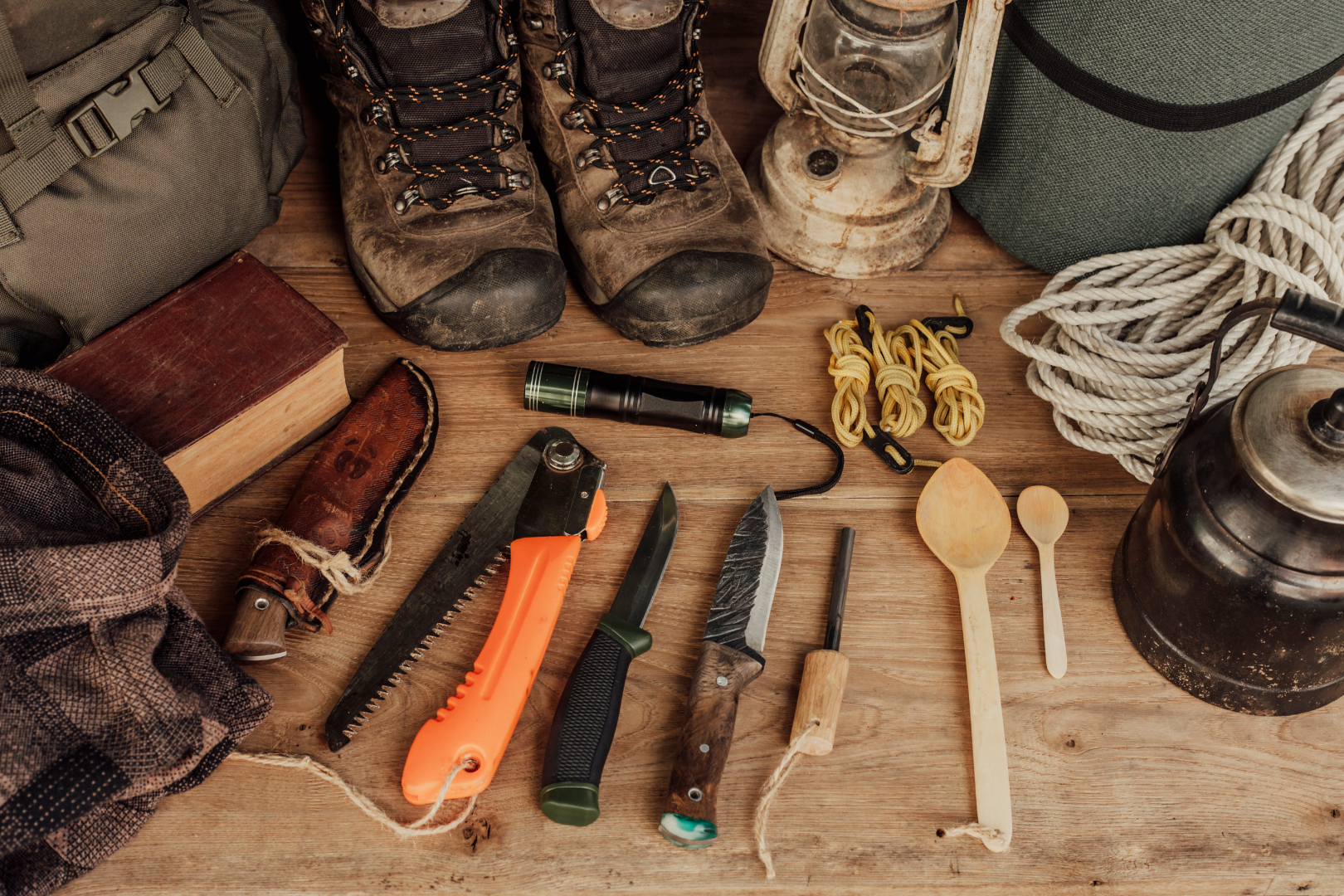
What is Bushcraft?
In short, bushcraft is a term used to describe a set of practical skills and knowledge needed to survive and thrive in the wilderness. These skills have a wide range.
Some of the most important of these skills include fire and shelter building, hunting, fishing, and tracking, as well as foraging, navigation, and wood crafting.
Bushcraft vs Survival: What’s the Difference?
The essence of bushcraft’s meaning goes beyond simply surviving out in the wilderness. It is also about cultivating the character and confidence necessary to live in an environment in which you have no control over.
In short, bushcraft is the art of thriving in the wilderness through traditional outdoor skills, while survival is the broader concept of staying alive in challenging situations.
Nature ultimately has the power over us. But with bushcraft, anyone can learn what it takes to prove themselves a worthy competitor in the wilderness arena. To uncover more, check out our other article about Preparing for a Disaster.
What is Bushcraft Camping
Unlike traditional camping, bushcraft camping is a unique approach to outdoor living that emphasizes self-reliance, survival skills, and a deeper connection with nature.
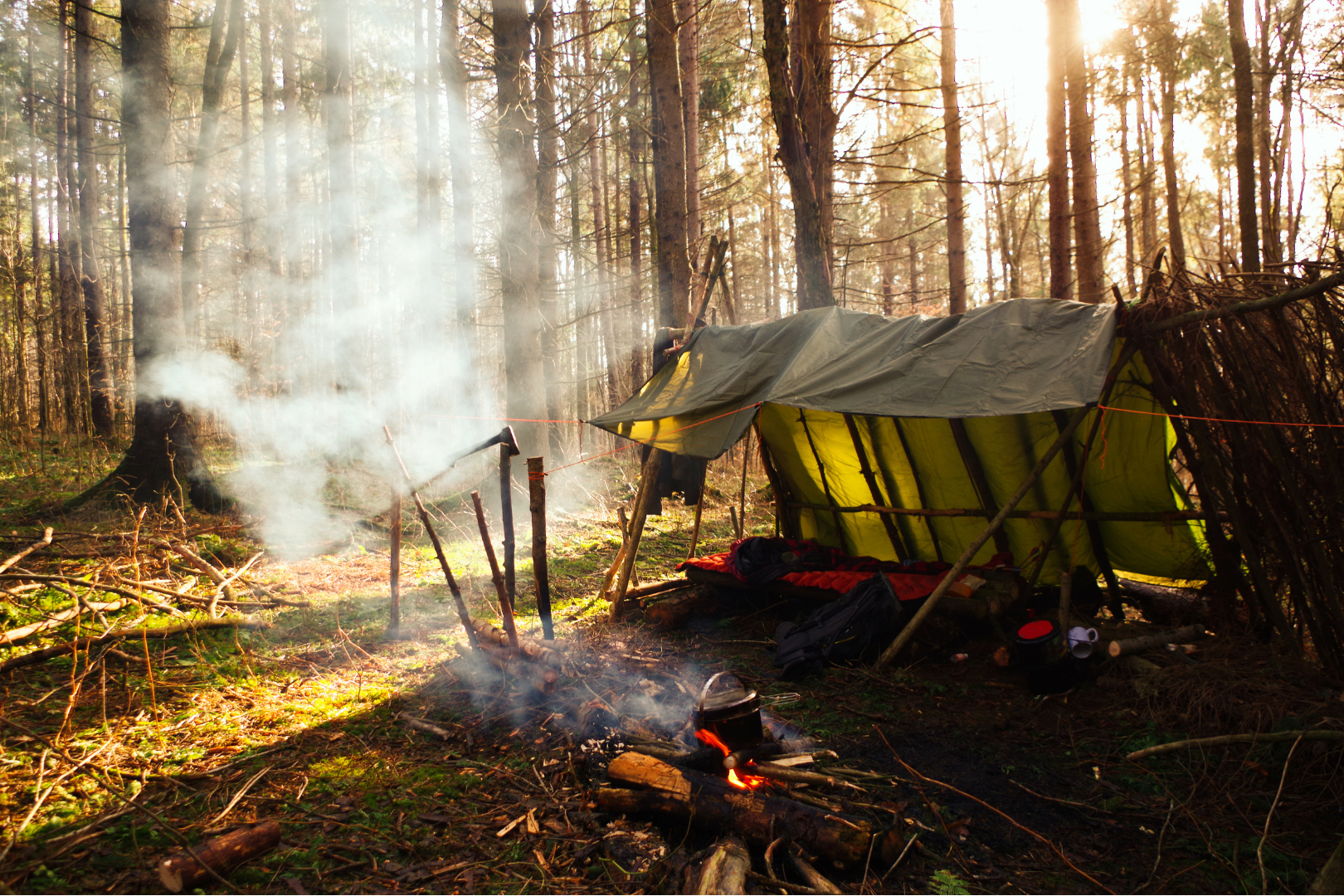
At a bushcraft campsite, enthusiasts embrace a set of skills that not only enhance their camping experience but also tap into a rich heritage of survival techniques.
Overall, bushcraft camping is a holistic adventure that invites individuals to immerse themselves in the art of living off the land.
Bushcraft 101: The Top 15 Bushcraft Skills to Learn
After answering the question ‘What is Bushcraft Camping’ it is time to see what you can actually do with it.
There are various methods of staying alive in nature. These 15 bushcraft skills we will observe have withstood the test of time and are tried and true. Despite our modernity and technological advancements, it is hard to beat the simplicity and efficiency of these bushcraft camp ideas below.
Making a feather stick
Most of us understand that a fire is a staple of camping. But, if you’ve ever spent the night in the woods, you probably also understand that starting a good fire is more difficult than you might expect.
Firewood, in the wilderness, is often scarce. And even when it is not, it is often damp or wet. This is even more true if you are in many locations on the East Coast, where a majority of the forests are, at spots, considered temperate rainforests.
There is, however, a great solution to this problem: A feather stick (or a fuzz stick), which is essentially a piece of wood that has been shaved to create a cluster of thin curls protruding from the wood’s end.
The feather stick makes it so damp wood can be used to start a fire when dry tinder is limited. All you need is a pocket knife to make one.
Where I go camping in the mountains of North Carolina, it sometimes rains 60 inches a year. So, I regularly make feather sticks when I’m spending the night in the woods, especially if I’m out in the backcountry.
Feather sticks are super easy to make, too. I find that you can make one in under a minute. You can also make multiple at one time, making this a make-shift tool with a great return on your investment.
Fire Starting Without Matches
Bushcraft fire starting without matches, a lighter, or any other kind of advanced fire starter can be extremely difficult. But it is not impossible.
As far as the more ‘primitive methods’ of making a fire go, using flint and steel is relatively easy and, as far as things go, it’s pretty cheap, too.
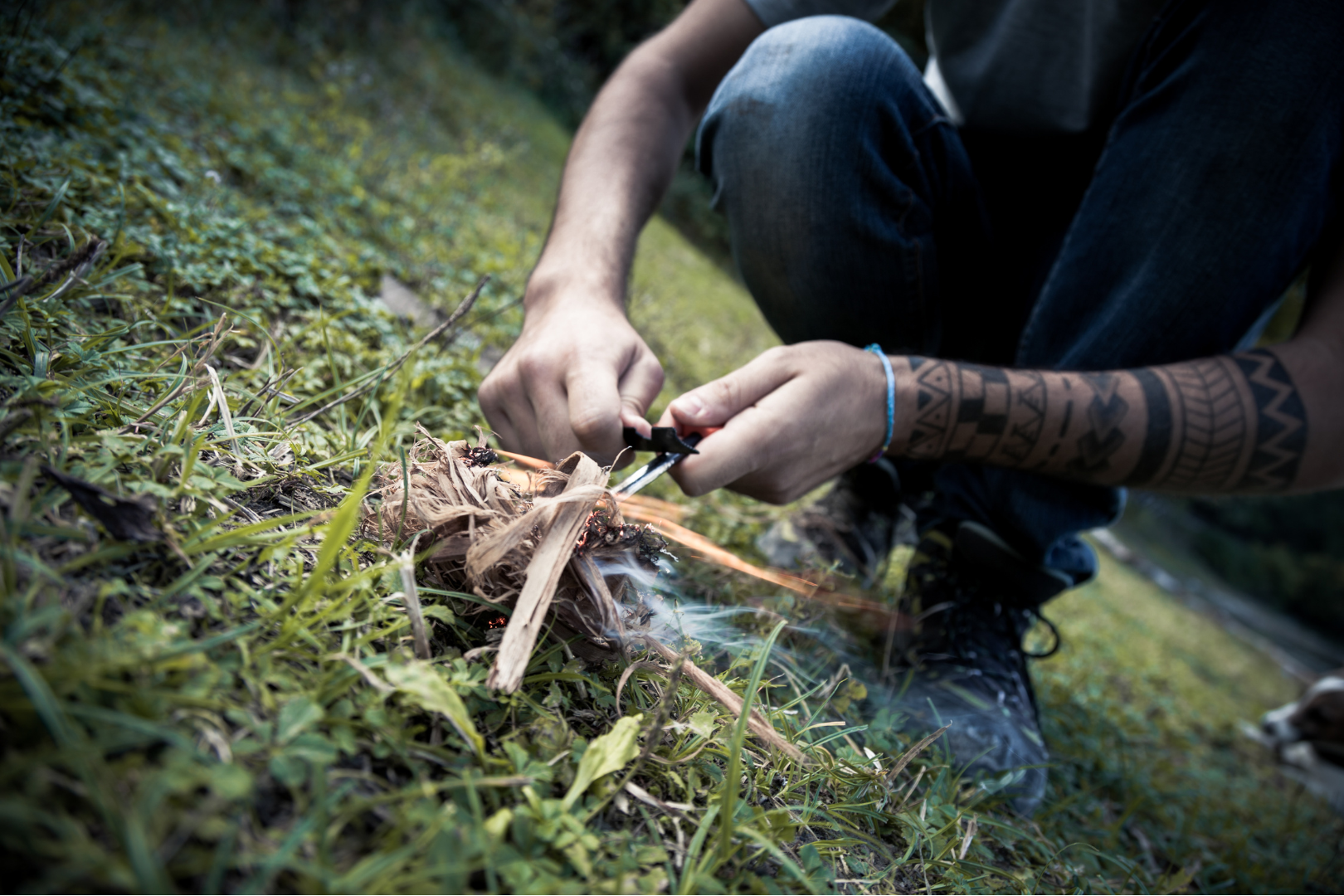
With a flint and steel, you must have decent kindling. Dry tinder is crucial and truly is the best bushcraft fire starter. If you combine the feather stick technique with this method, you should be good to go.
The same thing could be applied to the additional methods of starting a fire. Using a magnifying glass – or any other glass lens – to capture and harness the sun’s rays is age-old, as is using friction by making a v-hold shape in a board or log, getting a spindle, and rubbing it between your hands as fast as possible. This method uses a construction known as a bow drill.
These methods listed are great. We have been using them for thousands of years. But it could be easier, and that is where a ferro rod – short for ferrocerium rod – comes into play.

The ferro rod tool is made of metal alloy and is often called a prepper's dream. It's great for bushcraft camping because it can withstand rain, ice, sleet, and snow." It has a long lifespan and is simple to use, too. All you do is strike the rod against or with a hard surface, such as a rock, and watch the sparks fly.
Building A Bushcraft Shelter
Building bushcraft survival shelters is an art that encapsulates the essence of self-reliance in the great outdoors. From basic bushcraft shelter ideas to more advanced techniques, the key is to craft a shelter using minimal resources.
One versatile option is the bushcraft tarp shelter — a lightweight, portable solution that adapts to various terrains. Another option: Crafting a shelter from natural elements such as branches, leaves, and debris is a skill that taps into the primal connection with the environment.
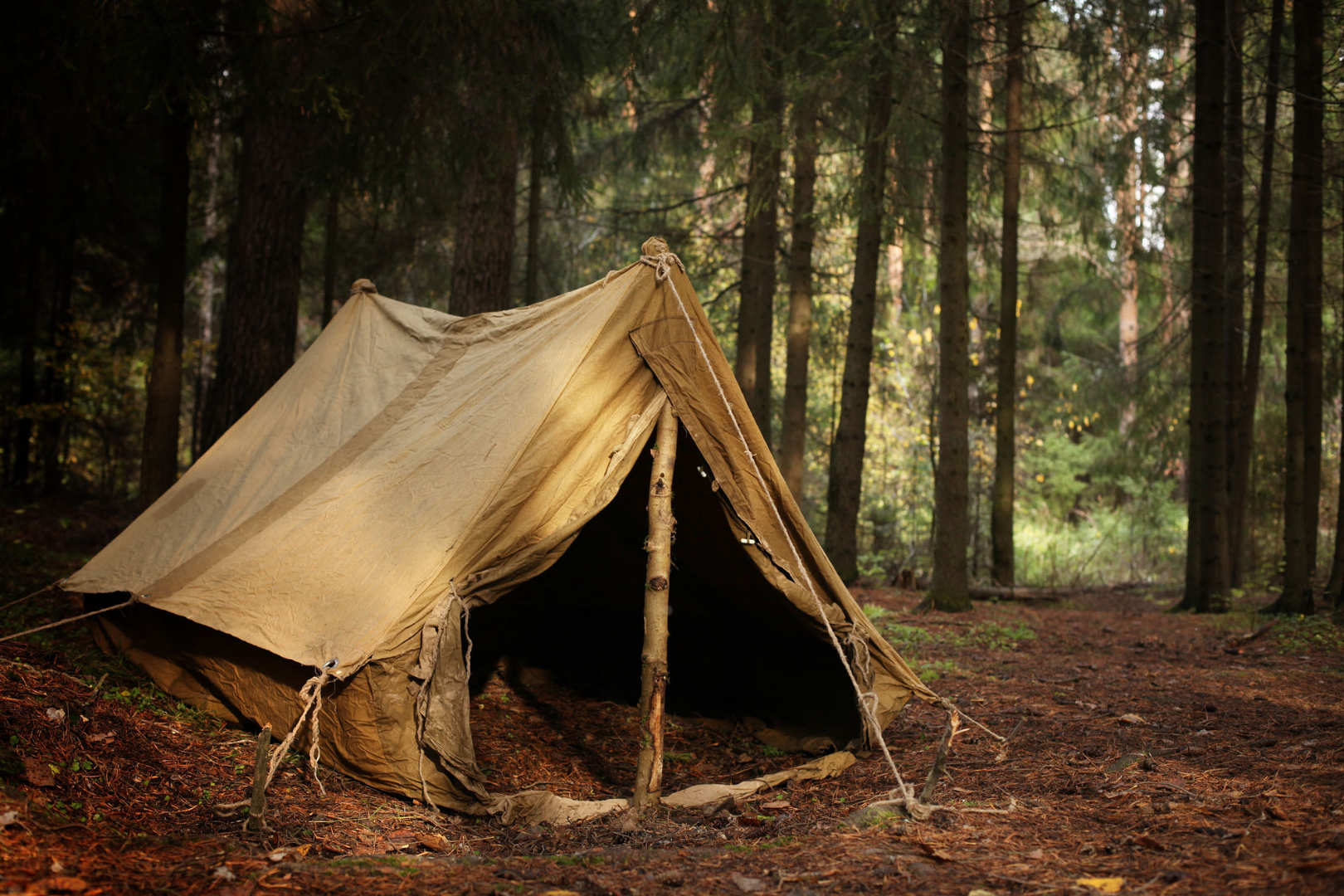
To construct a bushcraft shelter, begin by selecting a suitable location, and being mindful of factors like wind direction and proximity to resources. For the bushcraft tarp shelter, anchor the corners to trees or erect poles. This forms a durable cover against the elements.
When opting for the more primitive approach, first gather sturdy branches to form a skeleton – an A-frame is often a good choice – and then layer it with leaves and foliage, creating a thick insulating barrier.
Whittling
Bushcraft whittling projects provide a hands-on approach to crafting essential tools directly from natural resources, making it great for developing a sense of self-reliance in the wilderness.
One of the most straightforward applications of whittling projects is the creation of utensils. Carve wooden spoons, forks, or even basic cooking tools – turning raw materials into functional tools for camp life.
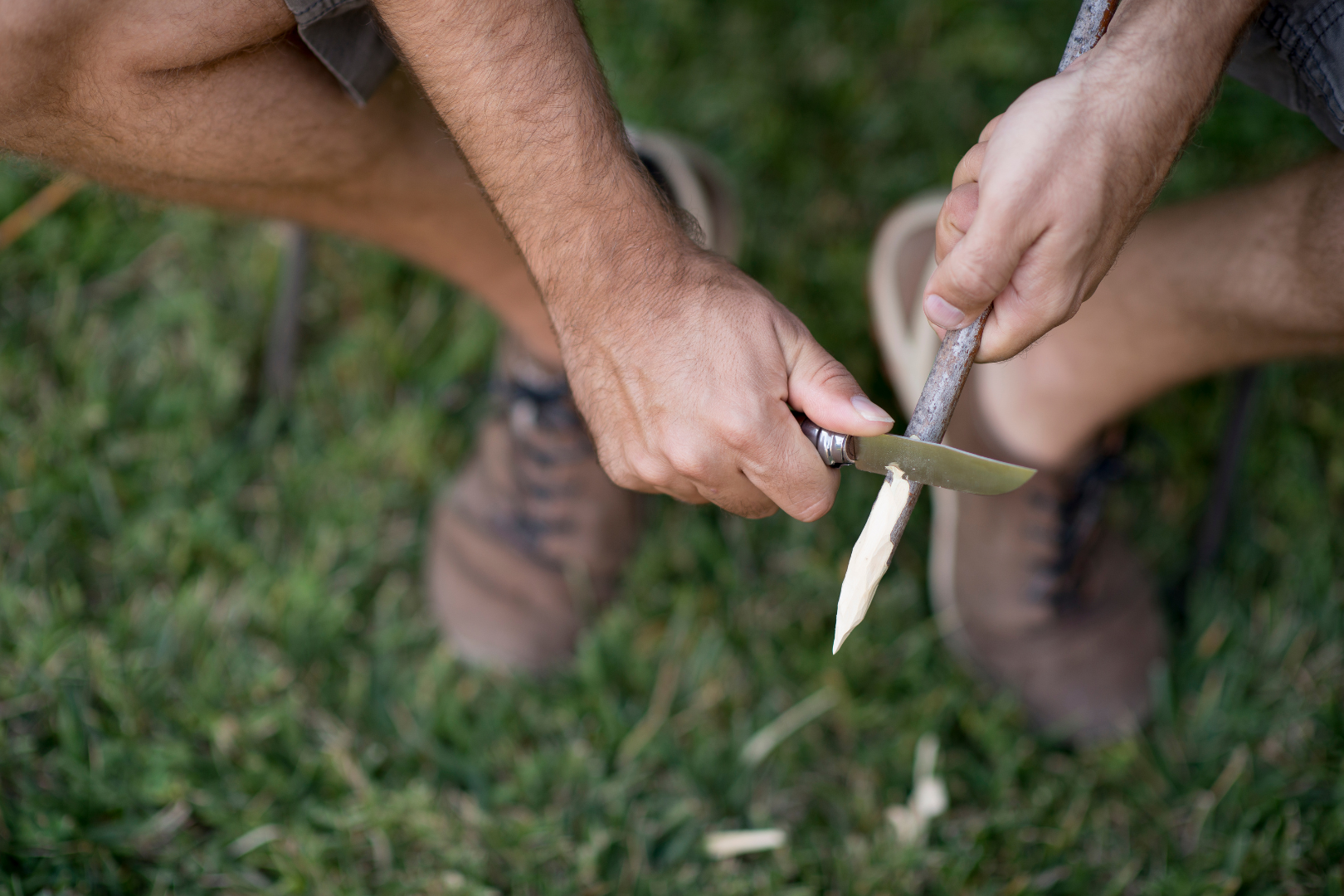
Whittled utensils are not only extremely useful but also showcase the connection of craftsmanship with the outdoors.
Whittling also proves conducive for fashioning stakes, tent pegs, or even primitive traps. This skill can serve as a valuable asset when constructing your bushcraft shelter.
Water Collection and Purification
In the realm of bushcraft, collecting and purifying water is paramount for survival. To collect water, first start by identifying a suitable location with an open space to capture rain. This could be a tarp stretched between trees or an inclined surface. Then, simply position the containers beneath the catchment area.
Bushcrafters also capitalize on natural depressions in the terrain to harvest rainwater. To do this, find low-lying areas where rainwater naturally gathers, then place your container or construct small dams to channel and collect the water effectively.
But, bushcraft water collection is the easy part. In the quest for drinkable water, though, there are a few ingenious methods to making a bushcraft water filter.
For starters, crafting a bushcraft water filter involves assembling layers of sand, gravel, and charcoal, creating a natural filtration system that removes impurities. This method is not always fool-proof, however.
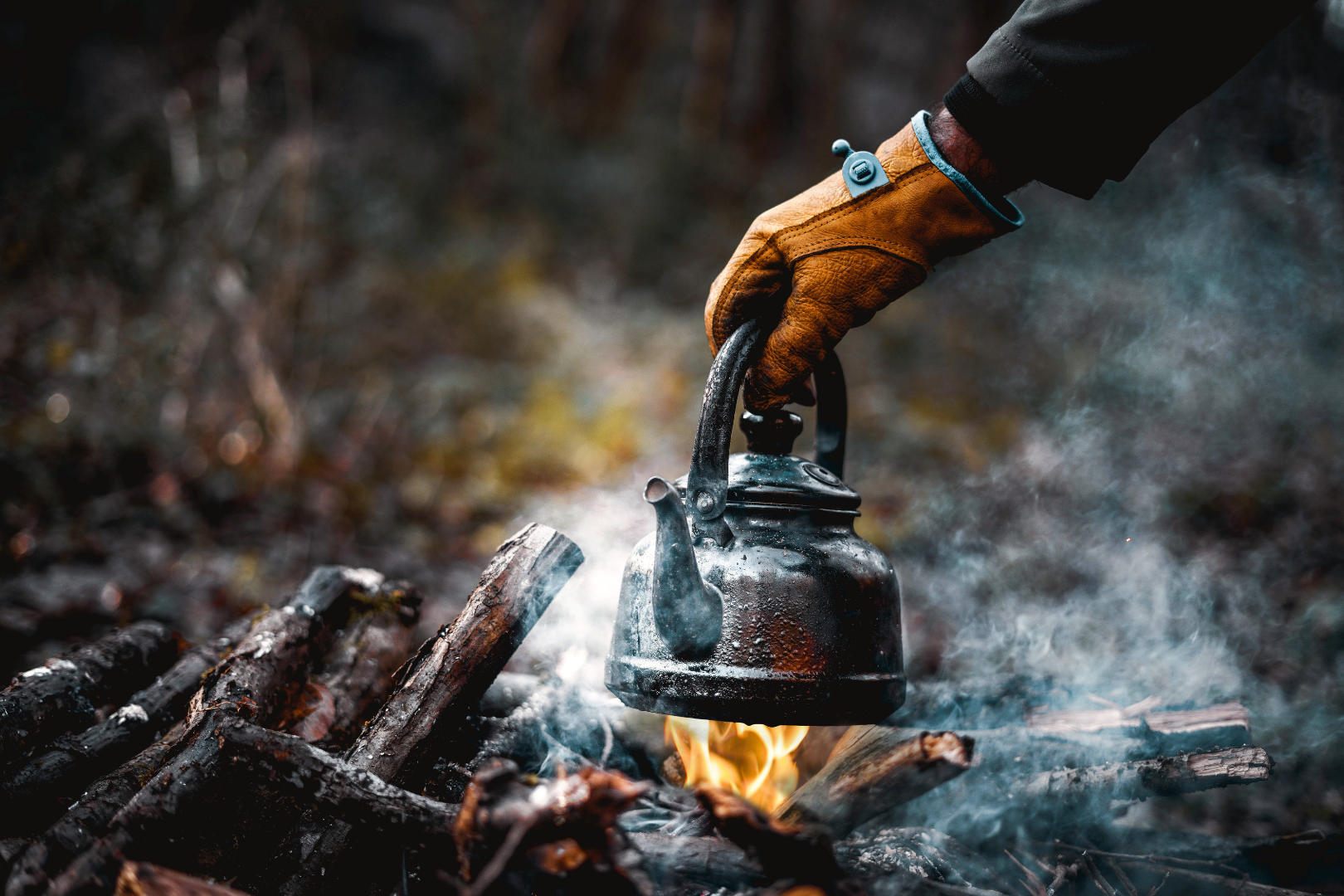
Boiling water is also a traditional yet reliable bushcraft water purification technique, and besides that, there are many different kinds of lightweight, portable water filtration systems on the market. Your decision ultimately lies in how much of a challenge you want to give yourself out in the wild.
Foraging
Bushcraft foraging is just as important as learning how to craft a snare, trap, or hunt in general. Sometimes, it might be even more important, as you cannot always rely on game to sustain yourself in the wild.
Still, this skill is not an easy feat. Properly identifying wild edibles is a critical skill because, in the wilderness, eating the wrong plants can be toxic (which sometimes means certain death).
A majority of the wild edibles you might locate while bushcraft are berries. This is a good thing, as berries are an excellent source of carbohydrates, fiber, vitamins, and healthy sugars.
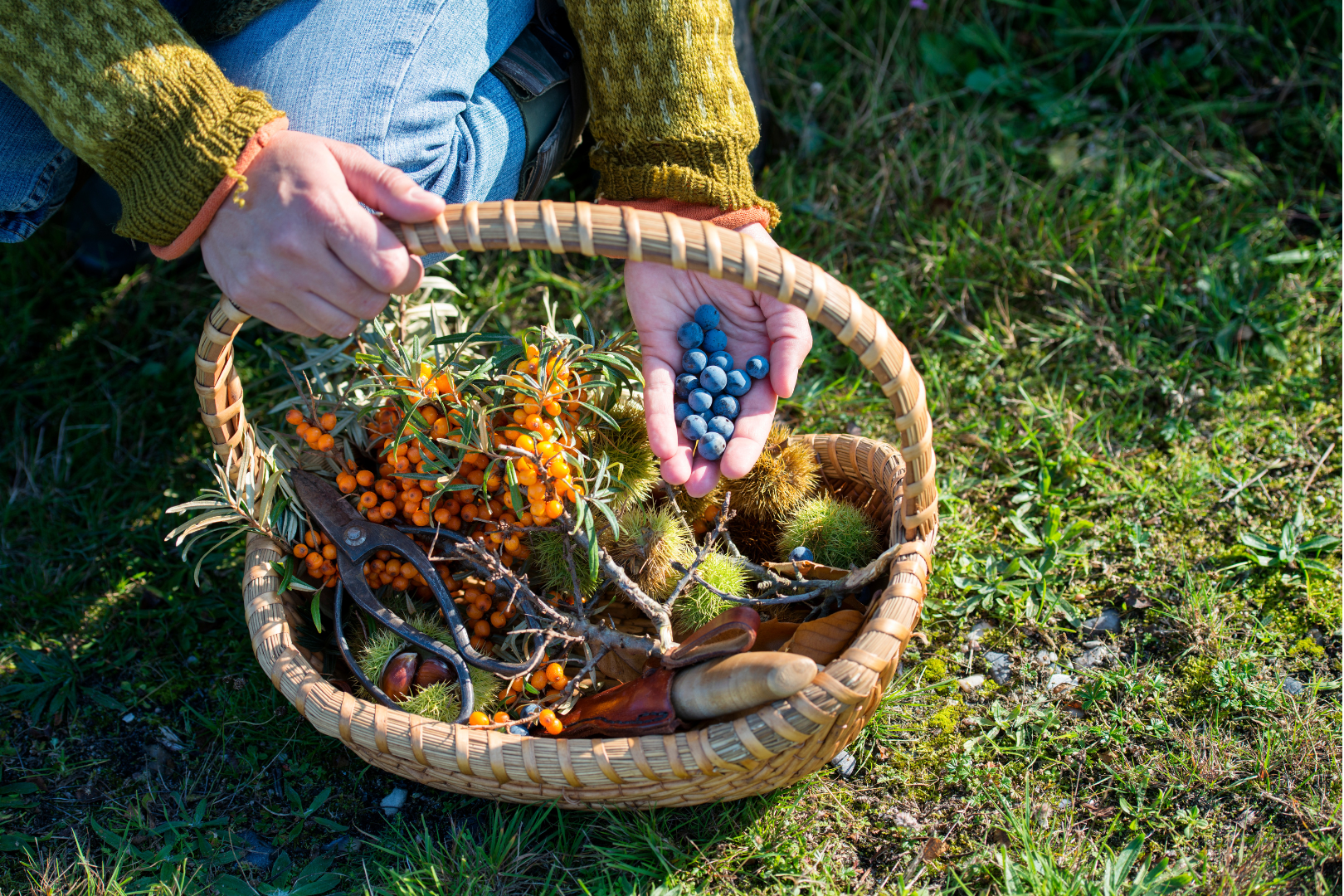
So, to start you off on your foraging journey, below is a simple test you can use to determine whether a type of berry is safe to consume.
Aggregate berries (those in tight clusters, such as raspberries and mulberries) are 99 percent edible globally. Black, blue, and purple berries are 90 percent edible. Red and orange berries are about 50% edible. And green, white, and yellow berries are 10% edible, so it’s best to avoid those.
Before you set out to forage, it’s necessary to do extensive research. You must be 100% confident that the plant, berry, or mushroom is completely edible and safe to consume.
Using Weapons For Hunting
Among the best bushcraft weapons are the bow and slingshot. Both of these offer stealth and precision.
The bow, a versatile choice, allows for silent, long-range hunting with proper arrow crafting. Plus, with a bow, you can secure food without scaring off nearby wildlife.
Similarly, the slingshot, a more compact and lightweight bushcraft weapon, provides a quiet yet effective means for small game hunting.
Treating Wounds And Basic First Aid Kit
Having the ability and means to heal yourself in the wild is of utmost importance. The reality is that you’ve got to be prepared for anything and everything.
Among the best bushcraft first aid kits is the M-FAK Mini First Aid Kit. This compact bushcraft first kit is tailored for wild environments.
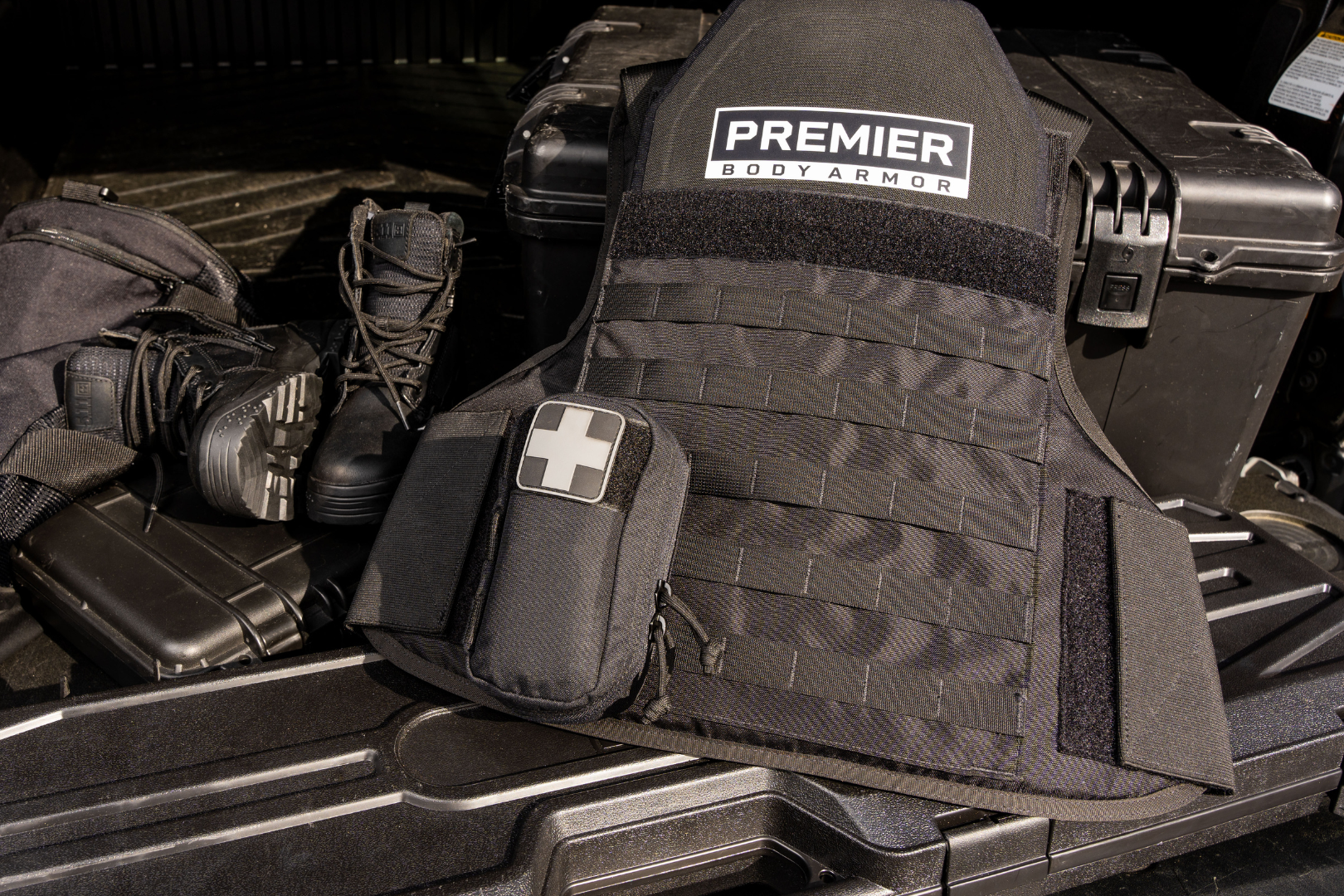
Equipped with this essential medical gear, you can be assured that you’ll have the timely and effective treatment of wounds at your disposal.
Hunting And Trapping
If you’re living off the land long enough, it will eventually get hard to sustain yourself without hunting. At a certain point, the calories will be a necessity. This, by proxy, makes mastering bushcraft hunting and bushcraft trapping vital for your survival.
One of the most simple bushcraft trapping techniques is constructing a basic snare using materials found in nature. First, find a flexible branch, create a loop with a slipknot, and position it along an animal trail. As the creature passes through, the snare tightens, securing your catch.
For larger game, crafting deadfall traps might be the better idea. This bushcraft trap involves balancing a heavy object precariously. When triggered, it swiftly descends, trapping prey.
Fishing
Bushcraft fishing is yet another surefire way of sustaining yourself in the wild. There are a few ways to do it, too.
The original bushcraft fishing method involves crafting a makeshift fishing rod using a flexible branch, some string, and a hook. Simply tie the string to the branch, attach the hook, and use natural bait. Then, locate a spot in the water where fish might be, and patiently wait.
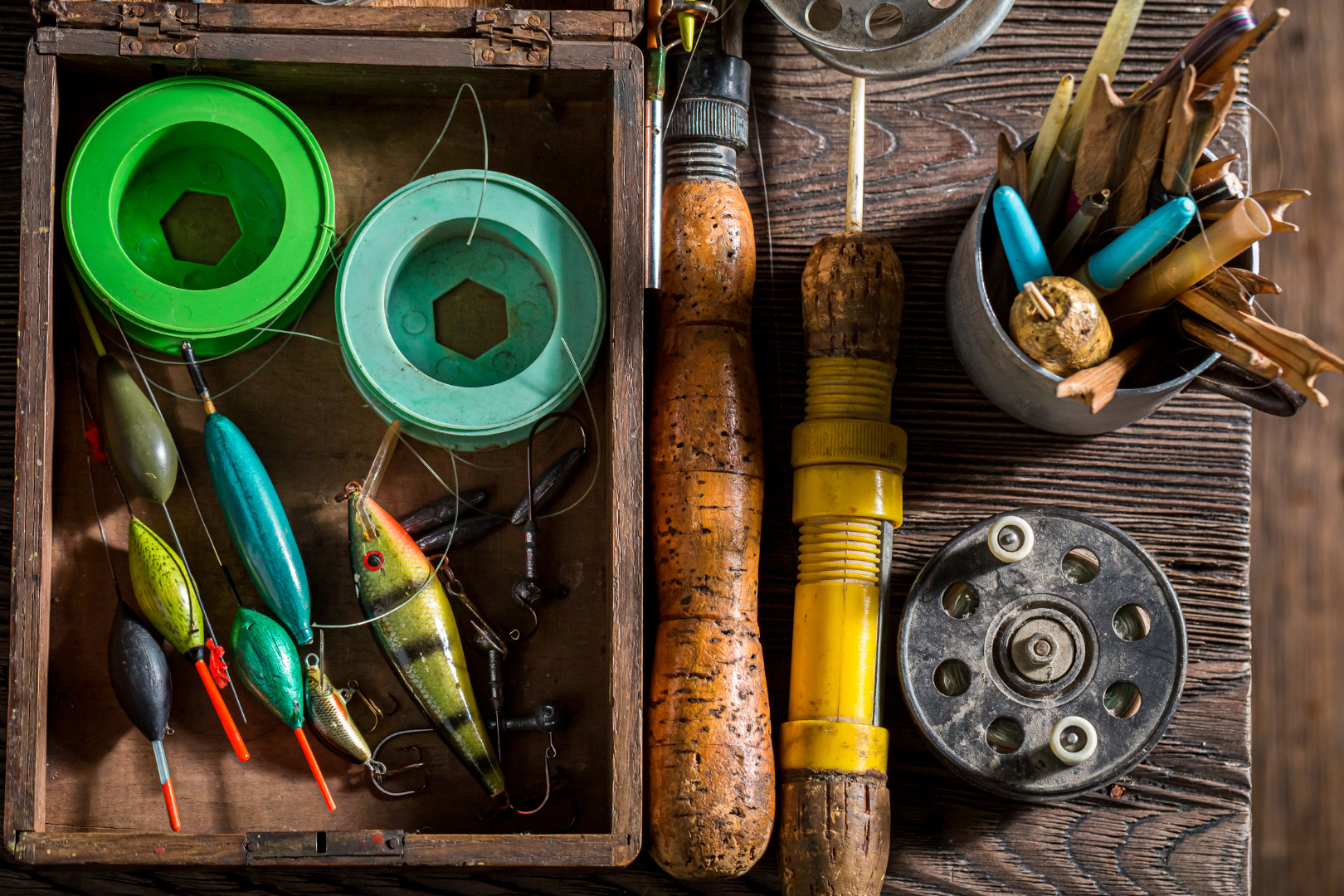
Another technique is creating a primitive fish trap with woven branches, which then guides fish into a confined space.
These methods prove to be extremely difficult, though. There’s no harm in bringing your fishing gear while bushcrafting. But again, it all depends on how challenging you want your journey to be.
Cooking Over the Fire
The next step after you catch your game and fish? Bushcraft cooking. To do this, you should incorporate bushcraft campfire cooking methods into your skillset. There are a few ways to do this.
If you are setting up camp in one spot for a while – or somewhat permanently – a good choice might be a cast iron set. A cast iron cooking set is great for bushcraft camping for various reasons: It can go anywhere, it’s tough, it’s uncomplicated to use, and it has a naturally nonstick finish.
Additionally, cast iron can functionally cook just about anything. This is all to say that – for a bushcraft cook set – cast iron is a practical choice.
But, if you’re continually moving from place to place, lugging around an iron cooking set can get quite heavy.
If that applies to you (and if you think you will need a lighter kit), consider other materials for your cooking set, such as stainless steel or titanium, which are also perfectly safe to use in direct contact with fire.
Navigating on Land
Mastering navigation is a skill that can be a game-changer for outdoor enthusiasts. The best bushcraft compass becomes your trusted companion, guiding you through uncharted territories with precision.

Alongside a detailed topo map, which renders the three-dimensional ups and downs of the terrain on a two-dimensional surface, navigating the wilderness becomes an exhilarating challenge rather than a daunting task.
Whether you're hiking through dense forests or traversing open landscapes, understanding the subtleties of terrain and direction will help ensure you stay on course.
Knot Tying
In the bushcraft world, tying knots isn't just about securing things; it's an art and a language of survival using ropes.
One of the most common bushcraft knots is the bowline knot, which would help keep your shelter tight and secure. Or think of the taut-line hitch, another knot excellent for anchoring your gear and shelter down to the ground.
There's also the clove hitch, perfect for tying tarps to branches, and the figure-eight knot, a solid choice for when things get intense. All of these knots for bushcraft can come in handy during your time living remotely.
Each knot can be a tool in your self-reliance toolkit, further aiding you in navigating the wild with confidence.
Flintknapping
Flintknapping is an old-school craft that links modern bushcrafters with the ancient skill of shaping tools from raw stone.
The technique is fundamentally pretty basic. First, begin by selecting a suitable piece of flint. Then, make sure it’s free of fractures.
Now, your tools: Find a percussion tool to hit with (like an antler, another rock, or something called a copper-tipped billet) and something for fine-tuning (maybe another piece of antler or rock).
Then, hit the rock to shape it, then fine-tune the edges. Think about what you want to make, like arrowheads, knives, or anything suitable for bush crafting. After that, smooth out the edges, while still making sure it stays strong.
Batoning Wood
Developing the skill of batoning wood is valuable for bushcrafters looking to enhance their firecraft proficiency.
To successfully baton wood, begin by selecting a solid, straight-grained log, preferably around forearm length and with a diameter suitable for your knife's capabilities. Choose a strong knife with a fixed blade, as this technique demands durability. Then, position the knife perpendicular to the wood's grain, aligning it at the desired split point.
With precision, use a mallet or another hefty piece of wood to deliver controlled force on the spine of the knife. This action initiates a split along the log's natural grain, transforming it into manageable kindling or firewood.
Beginner’s Bushcraft Tips and Tricks
As you set out on your bushcraft journey, armed with newfound knowledge, remember that the right tools, gear, and also clothing are your best companions in the wild.
Whether it's crafting a feather stick for a nice fire, building a shelter, or mastering the art of batoning wood for efficient kindling, each skill contributes to your self-reliance in nature.
Bushcraft is not just surviving; it's thriving out there, forging a connection with nature that goes beyond the basics.
Written by Andrew Schuler

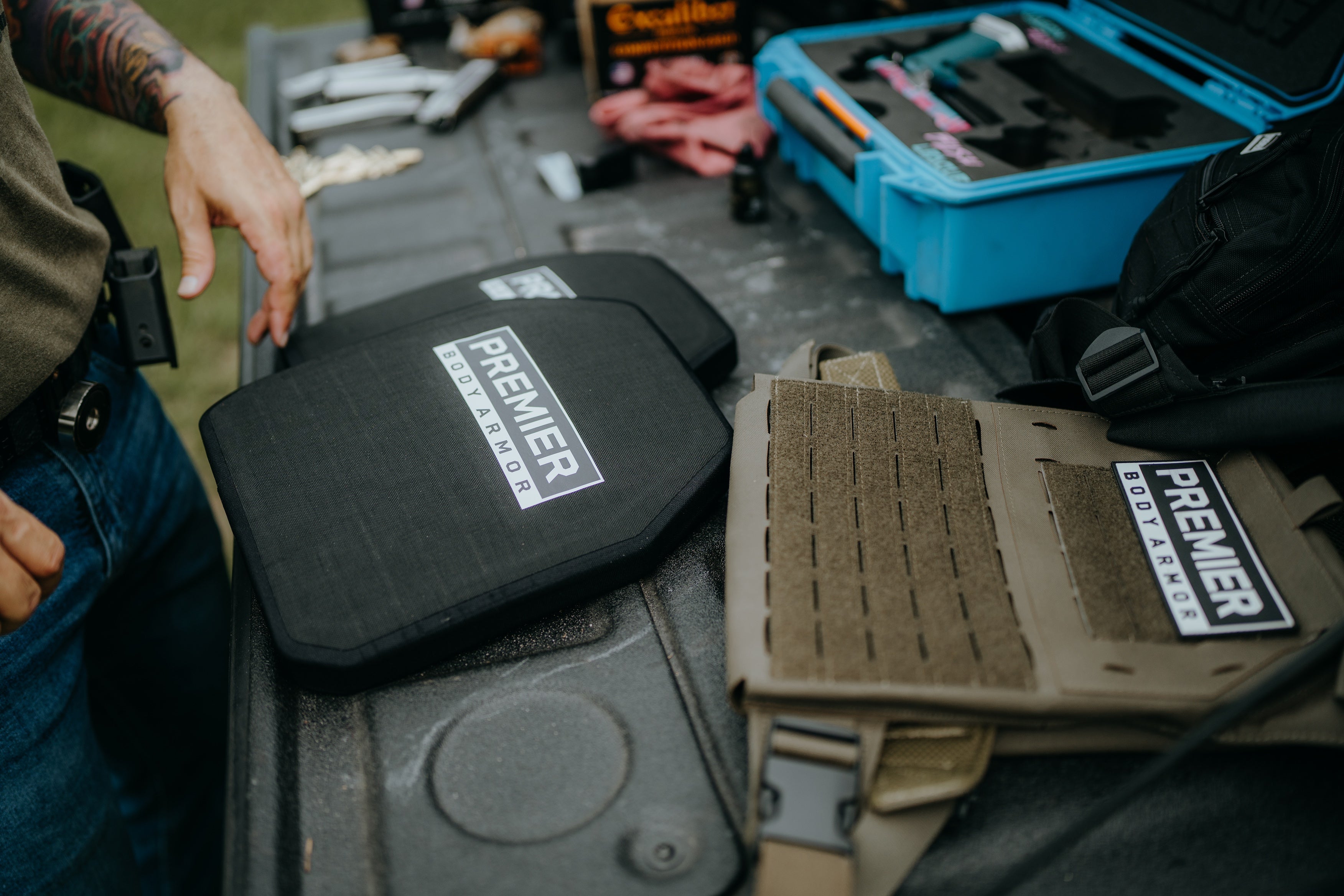
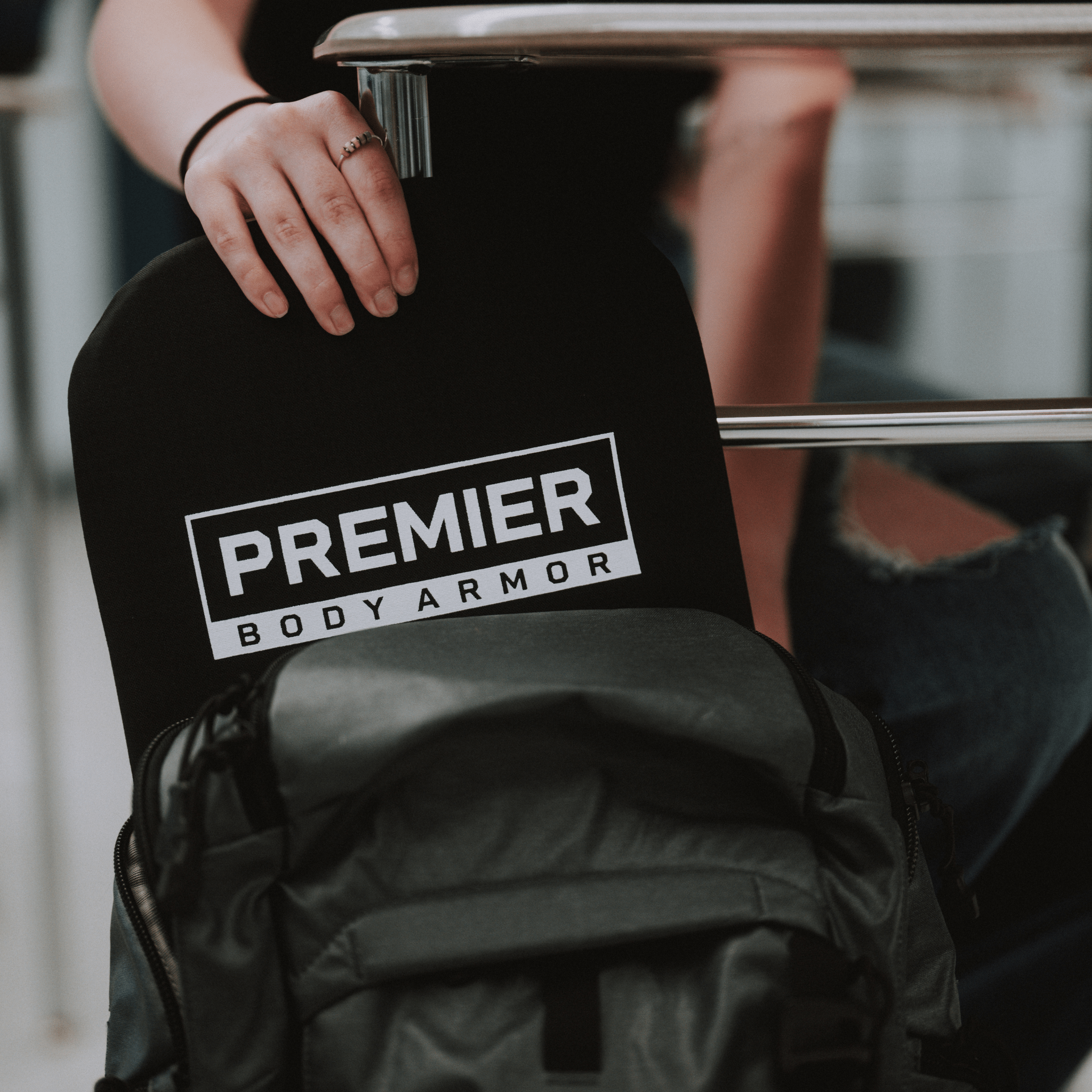
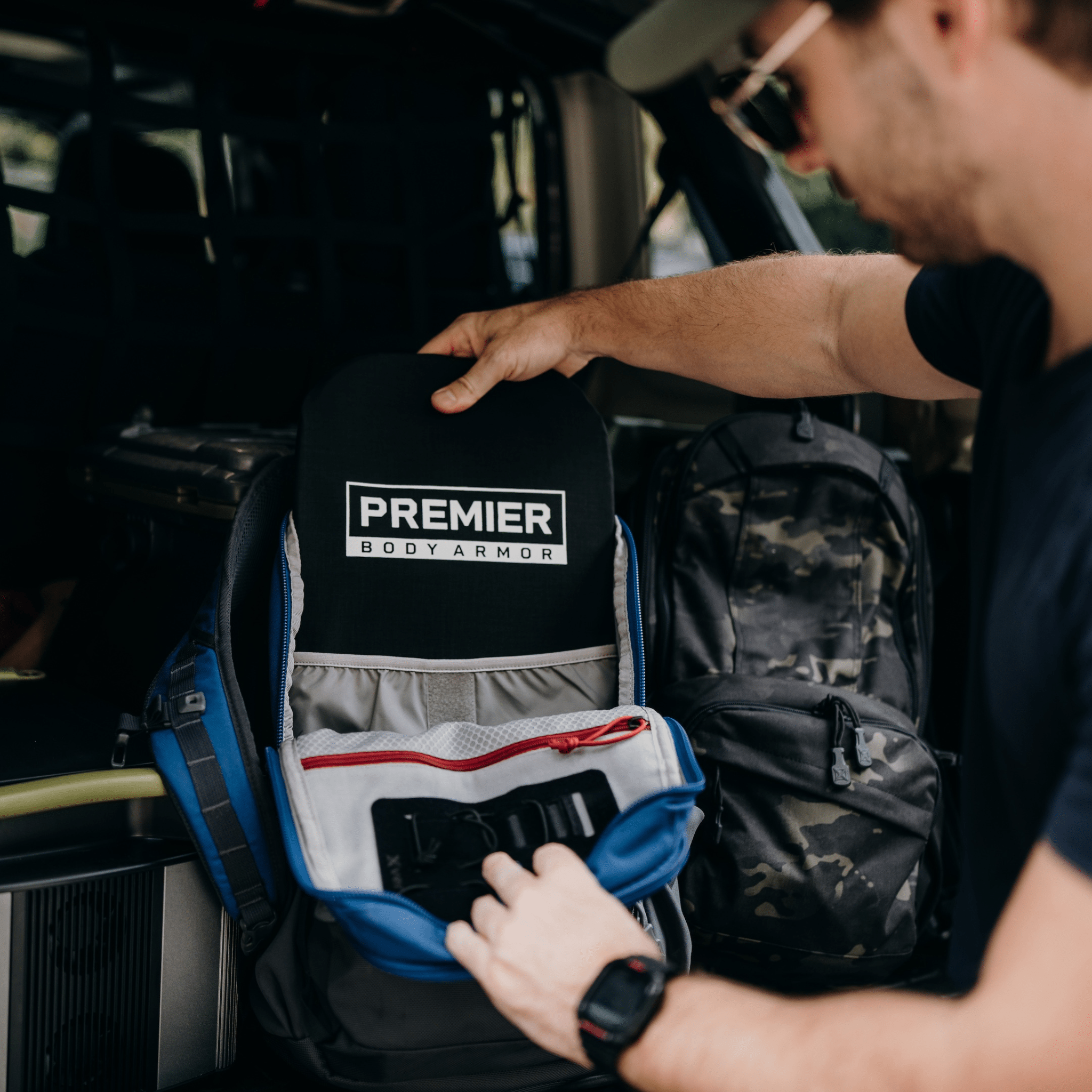






Very helpful 5 out of 5 stars.
Thank you! Good stuff.
Such great information, Thank you. Would love to take a class on this and practice. Being outside IS life.
A lot of very good information. Thanks !!
You may want to go to a army surplus store most have books on Bushcraft from beginner to advanced
Leave a comment